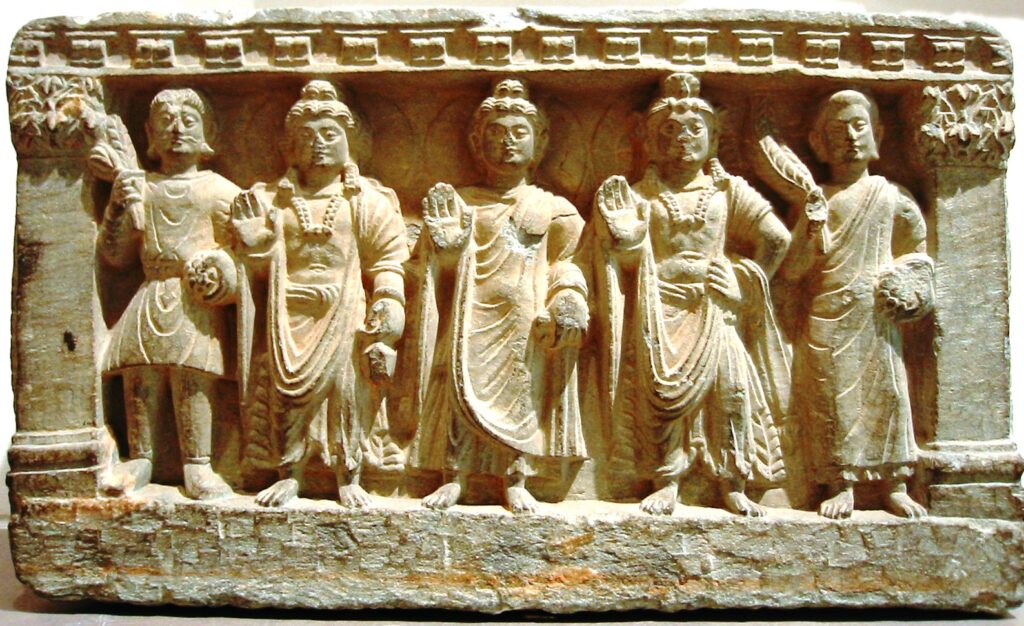The Two Birthplaces of Mahayana
“The movement which became known as the Mahayana started to arise some time between 150 BCE and 100 CE, as the culmination of various earlier developments. Its origin is not associated with any named individual, nor was it uniquely linked to any early school or fraternity, though it drew on both Mahasamghika and Sarvastivadin trends … It may have arisen at around the same time in the south-east and north-west.” (Peter Harvey)
The regions alluded to here as the “south-east” and “north-west” of India are respectively the region known as Andhra in the Satavahana empire, and the ancient region of Gandhara, in and around the Peshawar Valley in what is now north Pakistan. In the former, early manuscripts of the first Prajnaparamita sutra have been found in the Amaravati monastery belonging to the Mahasamghika school, which Edward Conze dated to around 100 BCE. Though there is no full scholarly agreement over the matter, there is a good possibility that the Astasahasrika Prajnaparamita Sutra or Perfection of Wisdom in 8,000 lines, was written at the Amaravati Monastery. Over two centuries later, Nagarjuna, the founder of the Madhyamika School, also lived and wrote in this same Amaravati monastery.
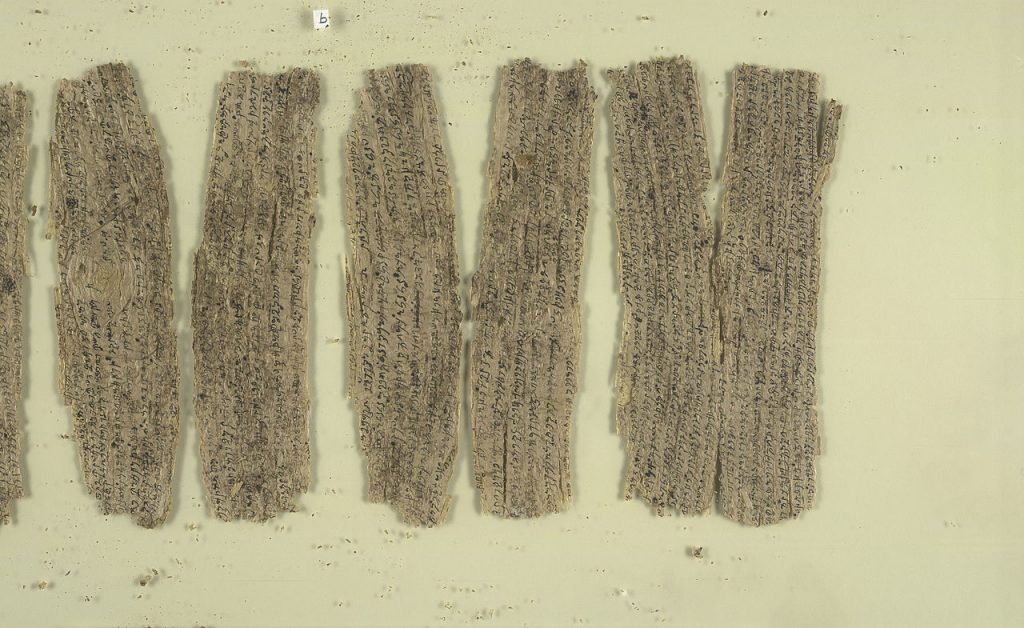
On the other hand, it is in Gandhara that most ancient manuscripts of both Theravada and Mahayana texts have been found. Buddhism was flourishing in Gandhara, and texts were being prepared for their journey to China on the Silk Road. But had these texts been composed in Gandhara on the basis of teachings which had so far been transmitted orally from teacher to disciple for several centuries, or had they been already put in writing in other Indian languages, and sent to Gandhara, so that they could be translated into the Gandhari language better known to Chinese translators than other Indian languages?
A quick look at the history of India between the death of Asoka at the end of the 3rd century BCE, and the end of the Kushan empire in the 3rd century CE around 250 CE – roughly covering the period leading up to the first Prajnaparamita texts, the start of the transmission of Buddhist texts to China, and the philosophical treatises by Nagarjuna – should give us an idea of what India was like in that period.
From Asoka to Kanishka
In the text on Asoka, we saw how he not only ruled his empire on the basis of Buddhist values, but he also laid down the foundations of a Buddhist religious lay practice, primarily through the building of stupas holding relics of the Buddha, and an intense missionary activity. This unique experiment, still celebrated on the Indian flag by the Asoka Cakra, was short-lived. Within fifty years of Asoka’s death in 232 BCE, the Maurya dynasty came to an end. The Shunga dynasty which followed was founded by a Brahmin and did not support Buddhism. By 180 BCE the Shungas had lost the north-western territories and, with these, the preeminence of what had been the ancient monarchy of Magadha, where the Buddha had taught, came to an end.
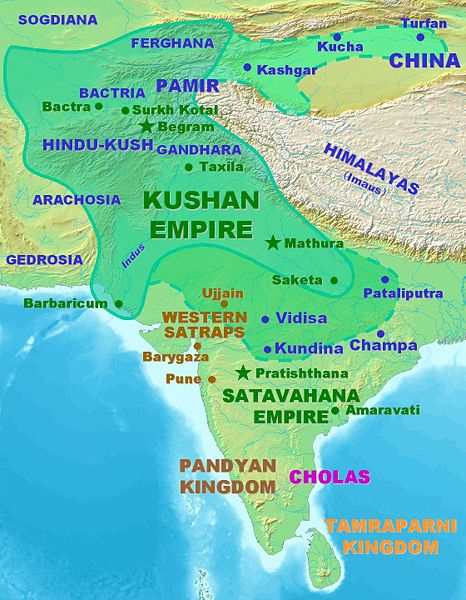
History then moved west and north to regions now occupied by Afghanistan and Pakistan, and even the Tarim Basin, now part of Chinese Xinjiang. There are two main reasons for that shift during the last two centuries of the first millennium BCE. On one hand, Alexander’s conquests had left a strong Greek present in that western region, originally the easternmost part of the Seleucid empire (former Persia) but, from 250 BCE onwards, gaining state status – the Greco-Bactrian state as well as a number of smaller Indo-Greek states in the Indus Valley, including in Gandhara, which acted as primary centres of diffusion of Hellenistic culture until their collapse in 10 CE.
On the other hand, the intense military activity waged by the people referred to by the Chinese as the “Yuezhi,” turned the region into a battle ground, displacing populations. The Yuezhi were nomadic pastoralists also carrying out trade, who were on the move throughout Central Asia in search of a place where they could settle. Tribes belonging to the Yuezhi confederation, which came to be known in India as the “Kushans,” entered and subdued the Greco-Bactrian state in 135 BCE. There, the Kushans, a people of Indo-European origin, became hellenized, before moving on eastwards and southwards to cover most of what is now Afghanistan, Pakistan, including Balochistan, north India as far as Sarnath, and central India down to Sanchi. The official date for the foundation of the Kushan dynasty is 30 CE, but more territories were conquered by Kanishka l (c. 127-c. 140 CE). Ujjain in the south, and Pataliputra in the east are included in an inscription describing the territories held by the Kushans at their maximum extent. A certain level of control of the Silk Road in the Tarim Basin was also achieved in the 2nd century CE.
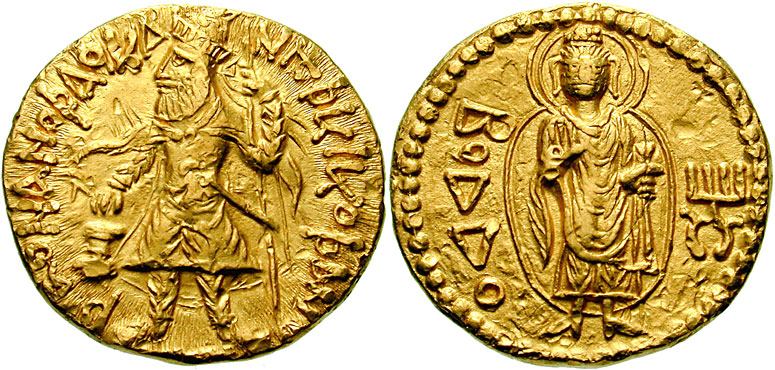
Burjor Avari states that “Buddhists consider Kanishka as second in importance only to Ashoka Maurya, because under his rule Buddhism had flourished as never before.” Quoting Danielou, he writes that, though he was ‘cruel and temperamental,’ Kanishka in fact showed himself to be “a great compromiser and synthesiser of different ideas. In his empire many religious traditions flourished: Persian Zoroastrianism, Greek and Roman paganism, Buddhism, Chinese Confucianism, Jainism, and, above all, a whole range of Vedic traditions.” The Kushan empire seems to have been ruled in the same spirit as that of Asoka – “a firm and fair rule of law based on Buddhist precepts,” as well as a high level of tolerance. Unlike Asoka, however, Kanishka did not put a voluntary end to his military conquests. And more than Asoka, he was at the head of a very wealthy empire.
Avari writes: “India was extremely rich and her GDP exceeded that of any other nation or region during this period. She was a nation with which people from far and near wished to trade … The post-Mauryan era is particularly well-known for the range and volume of international trade that was generated, and this trade, by both land and sea, added enormously to both urban and rural prosperity.” This, by the way, is also true for the Satavahana empire, which had hugely profitable trade relations with Rome along what has been called the maritime Silk Route.
According to Thomas McEvilley, Asoka had had close ties with the Greeks in Taxila, where he had been viceroy, which had led him to appoint Greeks as ministers, and send Buddhist missionaries to Greek cities, especially Alexandria. Being a foreign ruler with no roots in Indian culture, Kanishka may very well have felt as much as, or even more, Greek than Indian. The Kushans as a people had been hellenised in Bactria. The Bactrian language had become the official language of the Kushan empire, and was written in the Greek script.
Gandhara
Buddhism had been introduced to Gandhara by a number of Asoka’s edicts written in the Kharosthi script, and the building of six stupas, before the region fell into the control of the Indo-Greek kingdoms, which also supported Buddhism. One of the Indo-Greek kings – Menander – is well known as the king who asked multiple questions from the Buddhist monk Nagasena in the Milindaphana – Questions of the King Milinda.
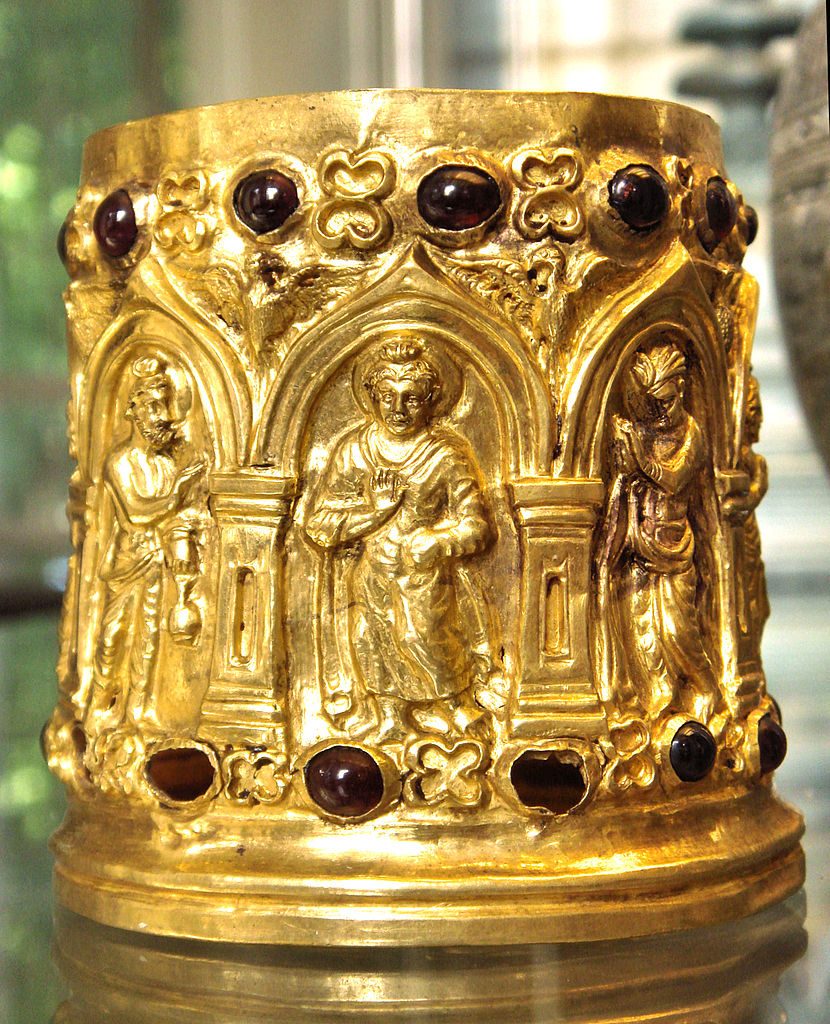
With its inclusion into the Kushan Empire, Buddhism flourished in Gandhara to the point that it became the place to visit for Buddhist pilgrims coming from far and wide. And it is in Gandhara that another step was taken in the transformation of the Buddha’s path of practice designed for a monastic context into a “religion” for the lay community. Asoka had focused on the building of stupas holding the relics of the Buddha, providing an emotional tie between the Buddha and his followers. Harvey notes that, to meet the same need, as “the absence of the long dead Buddha was keenly felt, … there arose a need for a representation of him in human form to act as a more personalized focus of devotion.” Until then the Buddha’s presence was only signified by a Dharma-wheel above an empty throne with footprints. The first representation of the Buddha is that found on the Bimaran casket, now on display at the British Museum, which has been dated to the first years of the 1st century CE, based on the coins with which it was found. Given that its representation of the Buddha is already quite sophisticated, it is thought that earlier representations have existed before that date.
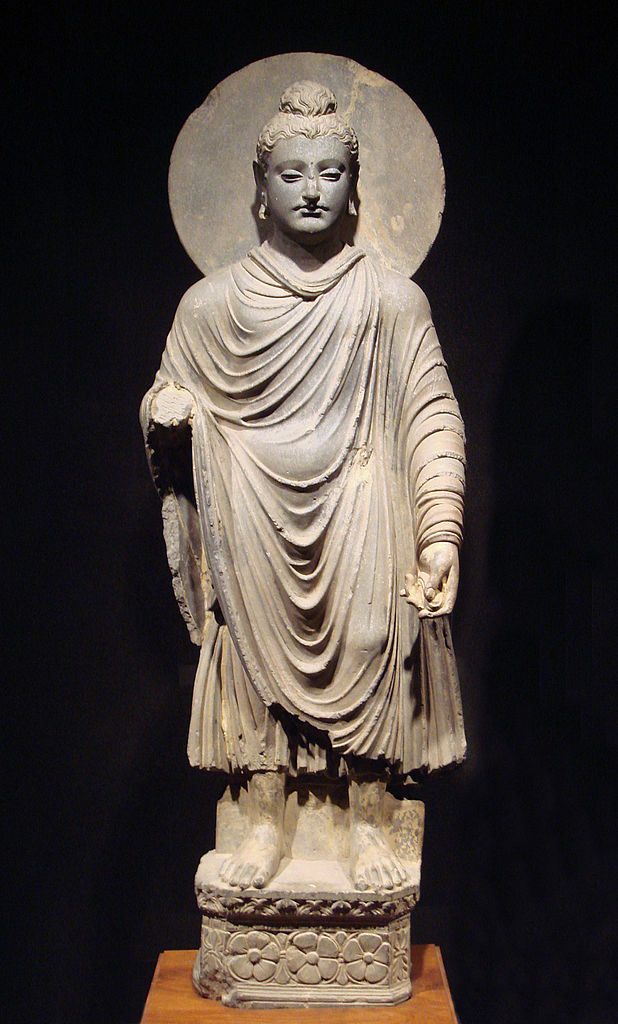
The representation of the Buddha was based on the tradition that he had been born with the thirty-two characteristics of a Great Man, said to result from karmic results from past lives. “The most obvious one shown on Buddha-images is Gotama’s ‘turbaned-head’, meaning that he had a head shaped like a royal turban, or that one with spiritual vision could see a royal turban on his head … Artists portrayals first hid it under a top-knot of hair, and then showed it as a protuberance on the top of the head … Later texts see it as a kind of ‘wisdom bump’ to accommodate a Buddha’s supreme wisdom.” (Harvey)
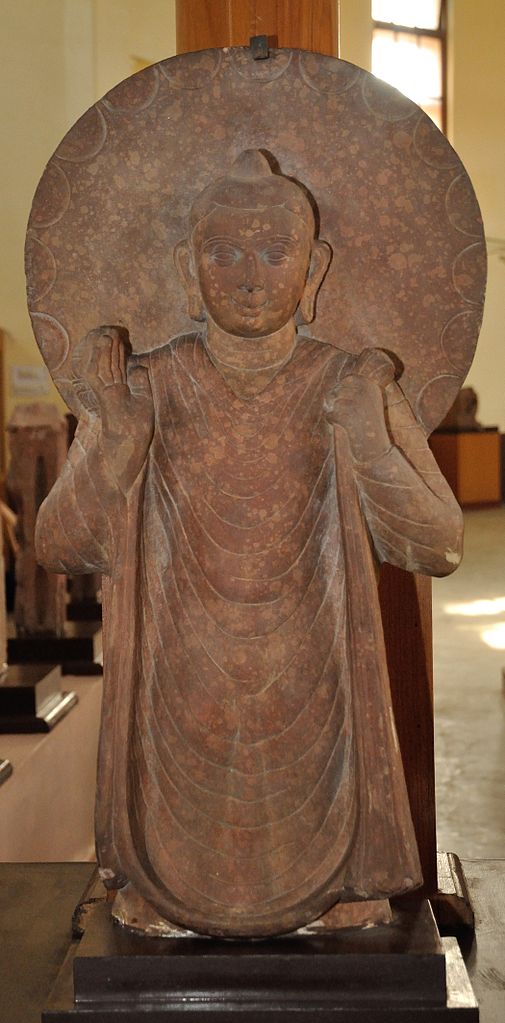
Buddha-images found in Mathura at a slightly later date have a different feel, though some scholars detect in them a Greek influence. Representations of the Buddha produced in Amaravati, the capital of the Satavahana empire, came about a century later.
The claim by scholars that the representation of the Buddha is the work of Greek artists is, according to McEvilley, “provocative since in the eyes of the rest of the world (if not India itself) the icon of the meditative Buddha is a kind of trademark of India.”
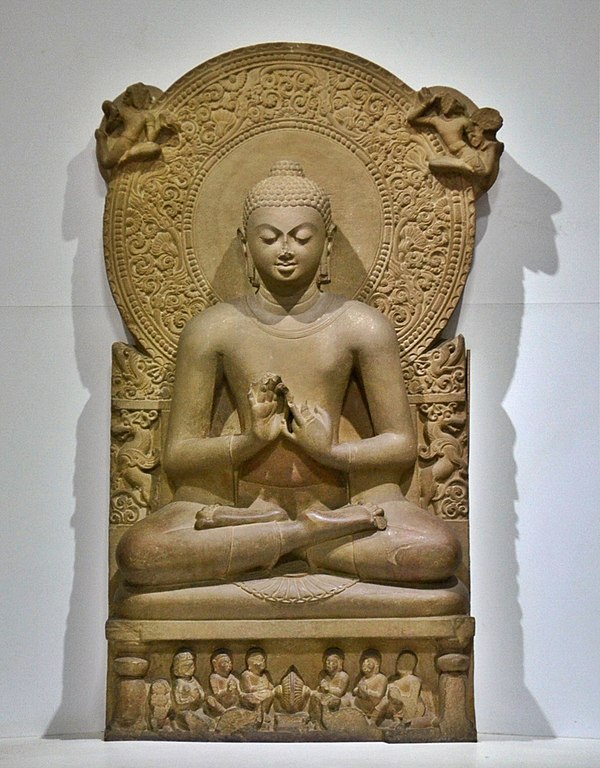
Harvey writes that “it was in the Gupta period (320-540 CE) that the classical Buddha-image was produced in India.” The toga has disappeared from the Gupta Buddha shown here, but the Greek inspiration can still be felt in the grace, deep concentration, serenity and compassion radiating from the Buddha’s presence. The Gupta artist has, however, added one striking feature: the iconic half-smile.
Gandharan artists also produced many of the compositions representing episodes of the Buddha’s life found on the heavily decorated toranas marking the four directions in stupas outside Gandhara, in particular on the Sanchi stupa.
Gandhara’s other claim to the attention of the Buddhist historian is, of course, its role in the transmission of Buddhist texts to China along the Silk Road which began during the 1st and 2nd centuries CE, at a time when Kanishka founded a significant number of stupas and monasteries in Gandhara. Until recently most of the texts that travelled to China were only known in their Chinese translations. But quite a few Gandharan scrolls written in Gandhari have now been found in jars, and are currently being deciphered, quite a challenging task given the fragility of the documents, and the fact that the Gandhari language is not standardized, that is, the spelling of any particular word varies within the same text. Most of the texts are dated to the first centuries of the common era. Among the scholars currently translating them, Richard Salomon, F. Raymond Allchin and Mark Barnard have shared the results of their work in Ancient Buddhist Scrolls from Gandhara: The British Library Kharosthi Fragments (1999).
The Satavahana empire
Amaravati, where the first Prajnaparamita sutra as well as Nagarjuna’s Mulamadhyamikakarika were composed, was the capital of the ancient Satavahana empire (1st century BCE-2nd century CE). The empire covered two regions of the Deccan, corresponding to present-day Maharashtra and Andhra Pradesh. The regions had been part of the Maurya empire which had, among other things, supported the building of rock-cut caves. The Satavahana rulers claimed Brahmanical status, and practiced Hinduism. They also, however, supported Buddhist monasteries as well as Buddhist caves. Most of the 1,500 rock-cut caves in India (out of which 1,000 are Buddhist) are located in Maharashtra and Andhra Pradesh, and were built from the 1st century CE onwards. Ajanta and Ellora caves are the best known, and their building and the elaborate art they display took many centuries to complete. In fact, Avari notes, “the epigraphic inscriptions retrieved from some of the caves provide us with details of religious charities and endowments made not just by the prosperous merchants or local governing elites but also by a whole variety of people belonging to various crafts and professions. Buddhism was the inspiration behind the actions of these people.”
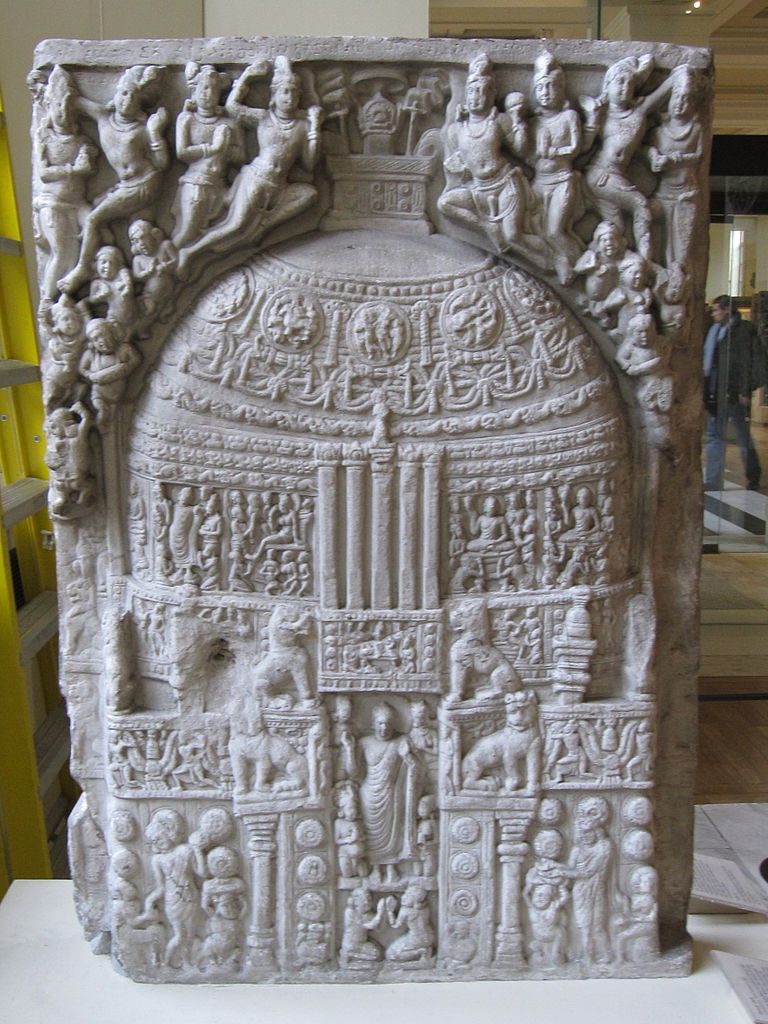
Here again, we find a prosperous region drawing huge revenues from the sea trade with Rome. Five harbours had been founded on the western coast through which Indian goods much in demand among the Romans were shipped, and roads leading to these harbours were dotted with Buddhist monasteries. “It is in the context of prosperity and piety that we can best appreciate the glory that was the great stupa of Amaravati, which no longer exists.” (Avari)
Though Buddhism had been introduced into this distant region at a relatively late date, it had flourished there at least as much as in the north, and we should not be surprised that Amaravati Monastery could have played a decisive part in the launching of the Mahayana. The claim that the Perfection of Wisdom in 8,000 Lines was composed in Amaravati, a Mahasamghika monastery, goes back to a statement by Candrakirti. Additionally, on the basis of a study of the contents of the sutra, most Japanese scholars believe the text to be an adaptation of the earlier Diamond Sutra, perhaps as a transcription of an oral tradition. Harvey asserts that many of the positions characteristic of Mahayana are found in the texts of the Mahasamghika school, and Mahasamghika monasteries had existed in or near Amaravati since 300 BCE. Furthermore, these Mahasamghika texts are said to have been inspired by meditations by forest monks. If that is so, then, the Perfection of Wisdom in 8,000 Lines, one of the key text of Mahayana, would have arisen from the meditation of forest monks, far away from any Greek influence. Most scholars believe that this text was indeed written in Amaravati, but later Mahayana sutras were composed in Gandhara.
Thomas Evilley, then, is only partly right when he says that “the deep Greek penetration into Buddhism, and the fact that the Mahayana forms of Buddhism arose specifically at the period of maximum Greek involvement, suggest Greek influences on Indian culture as profound and historic as the penetration of Indian ideas into Greek thought in the pre-Socratic period.” Some of the deepest roots of Mahayana may in fact lay in the meditations of Mahasamghika monks in the forests of Amaravati.
Sources
Peter Harvey – An Introduction to Buddhism: Teachings, History and Practice (2013)
Burjor Avari – India: The Ancient Past (2016)
A. Danielou – A Brief History of India (2003)
Richard Salomon, F. Raymond Allchin and Mark Barnard – Ancient Buddhist Scrolls from Gandhara: The British Library Kharosthi Fragments (1999)
Thomas McEvilley – The Shape of Ancient Thought (2002)
